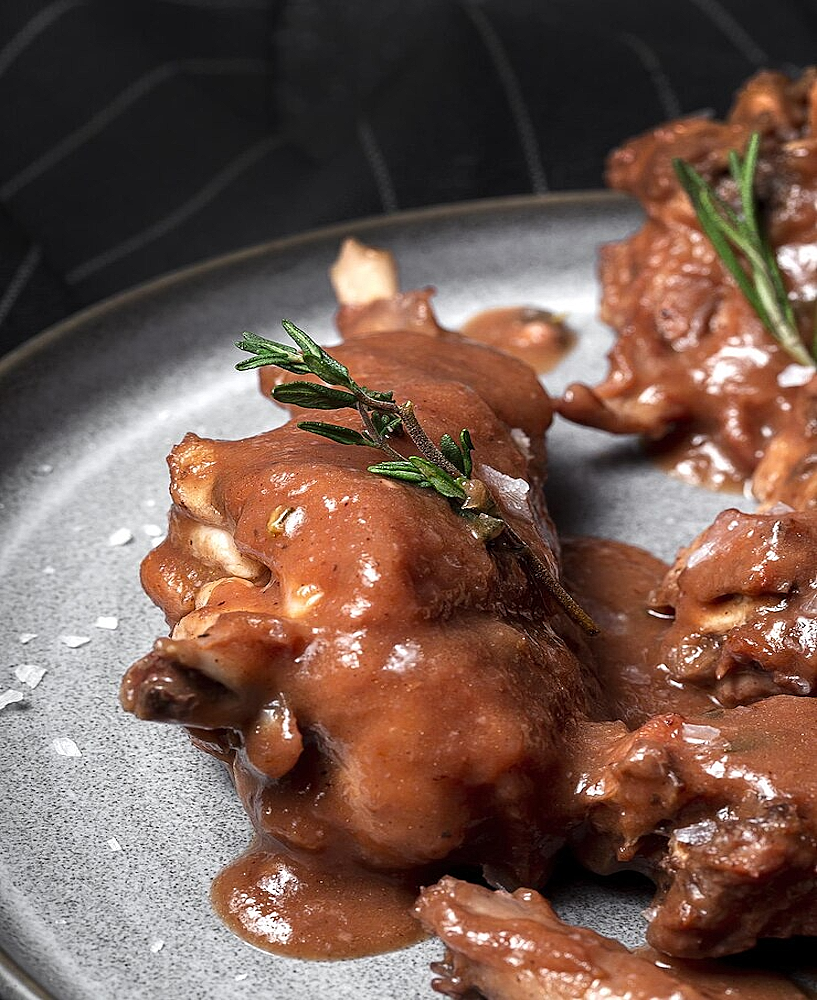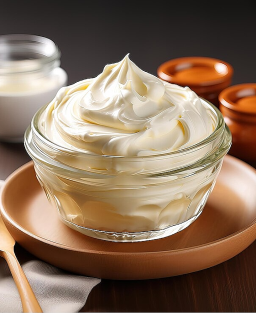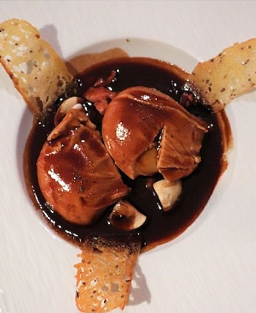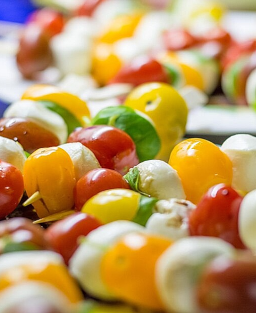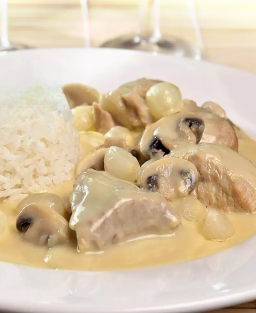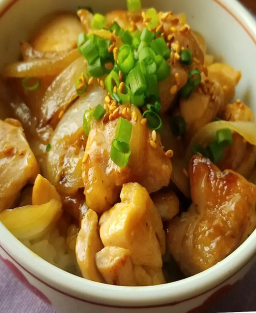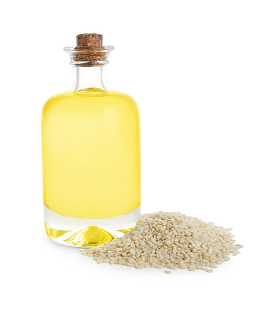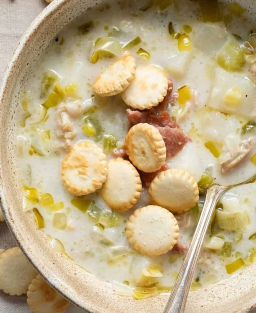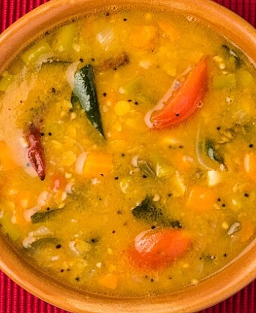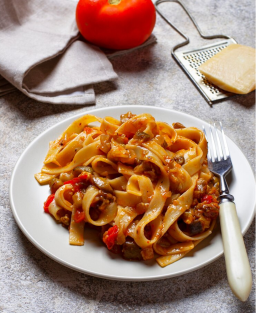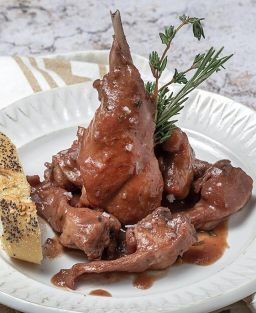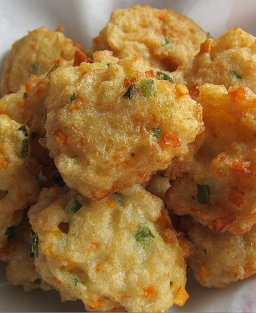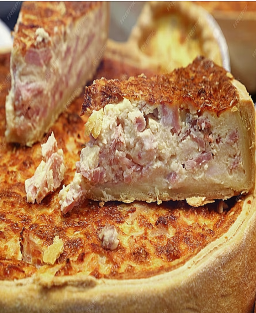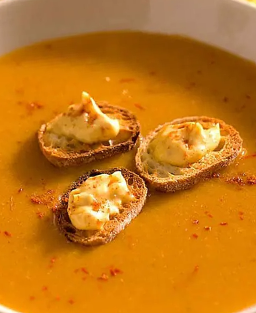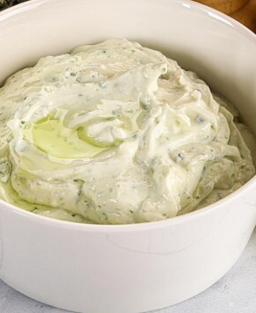- Out-of-Stock
Rabbit in Wine Recipe in the Style of Maître Chiquart (circa 1420)
Rabbit in Wine Recipe in the Style of Maître Chiquart (circa 1420)
Historical Context
Maître Chiquart, head chef at the court of Duke Amadeus VIII of Savoy, is the author of one of the oldest French cookbooks, titled Le Livre de cuisine, also known as Du fait de cuisine. This book, written around 1420, showcases his culinary expertise and serves as a major reference for the study of medieval cooking. More than a simple collection of recipes, it is a manual intended to organize grand princely banquets, with precise instructions on quantities, utensils, techniques, and required staff.
Duke Amadeus VIII, a key figure in 15th-century Europe and later elected antipope under the name Felix V, made the Savoy court a place of prestige. Maître Chiquart’s recipes reflect elite, sumptuous cuisine designed to dazzle guests with abundance, theatrical presentation, and refinement. Luxurious ingredients such as spices, game, and rare fish were omnipresent in these representational dishes.
In Le Livre de cuisine, the recipes—though structured around simple cooking methods (roasting, broth, stuffing)—feature a wide variety of spices and elaborate compositions. Rabbit, a common game animal, is prepared with herbs, wine, and fine spices. Alongside it, Maître Chiquart offers a range of iconic dishes from the medieval aristocratic table.
Meats and Game
-
Roasted swan: stuffed and roasted, with feathers replaced at the end for visual effect, a common practice in medieval banquets.
-
Roast pork with cameline sauce: a sauce made from bread, wine, vinegar, cinnamon, cloves, and ginger.
-
Venison stew (civet): deer meat slowly cooked with red wine, onions, and spices.
Fish (often served on fasting days)
-
Pike stuffed with green sauce: a refined stuffing served with a herb and bread sauce.
-
Sturgeon galantine: boiled fish covered with a sauce made from reduced broth, bread, and spices, sometimes decorated with gold leaf.
Pies and Tarts
-
Cretonnée pie: minced meat filling seasoned with ginger, sage, and cheese.
-
Eel pie: spiced and sometimes sweet-and-sour, typical of medieval taste.
Soups and Broths
-
Chicken broth: boiled chickens in spiced broth with stale bread and egg yolk to thicken.
-
Chickpea and almond soup: creamy soup combining legumes and almond purée, sweetened with sugar.
Desserts and Entremets
-
Blancmanger: a dish made from poultry, almond milk, rice, and sugar—sometimes sweet, sometimes savory.
-
Colored wine jelly: spiced jelly often tinted red or yellow using saffron or fruit juice.
Drinks and Sauces
-
Green sauce: fresh herbs pounded with bread, vinegar, and spices.
-
Hypocras (or hippocras): spiced and sweetened red wine filtered through cloth.
Maître Chiquart’s recipes embody the ostentatious culinary art of the Middle Ages: abundance, color play, rich aromas, and social or religious symbolism. These dishes were designed not only to nourish but especially to represent the power, culture, and refinement of the court that served them.
Rabbit Recipe in the Style of Maître Chiquart
Ingredients:
-
1 whole rabbit, cut into pieces
-
½ glass of red or white wine
-
1 chopped onion
-
1 pinch of salt
-
1 pinch of pepper
-
1 pinch of ground ginger
-
1 pinch of ground cinnamon
-
1 bouquet garni (thyme, bay leaf)
-
1 tablespoon of butter or fat (lard, rancid bacon fat)
Preparation:
-
Cut the rabbit and carefully wash the pieces. Pat them dry.
-
Brown the meat in hot fat until nicely colored.
-
Add the chopped onion and sauté gently.
-
Season with salt, pepper, ginger, and cinnamon. Mix well.
-
Deglaze with the wine. Scrape the cooking juices.
-
Add the bouquet garni and a little water or broth.
-
Cover and simmer gently for 45 minutes to 1 hour.
-
Adjust seasoning. Serve with country bread or seasonal vegetables (turnips, parsnips).
Culinary Context and Use of Ingredients
Spices in the Middle Ages
In medieval court cuisine, spices played a central role. Ginger, cinnamon, cloves, and nutmeg came from the East via caravan routes and were very expensive. Their use reflected both refined taste and the wealth of the household master. These aromas served to enhance the meat, sometimes mask slight freshness defects, but mostly to impress guests.
Herbs and Aromatics
Unlike spices, aromatic herbs such as thyme, bay leaf, parsley, and sage were locally grown in herb gardens or monasteries. They were used to flavor broths, sauces, and meats, including game.
Wine in Cooking
The use of wine as a base for sauces or to deglaze meat juices was common. It added slight acidity and aromatic depth.
Legacy of Maître Chiquart
Chiquart’s work reminds us that gastronomy is as much about social representation as taste. His recipes illustrate the art of hospitality in the 15th century: abundance, technical mastery, and sensory richness.
Rabbit, prepared simply yet nobly, becomes a mirror of an era where the table was a stage for power and prestige.











